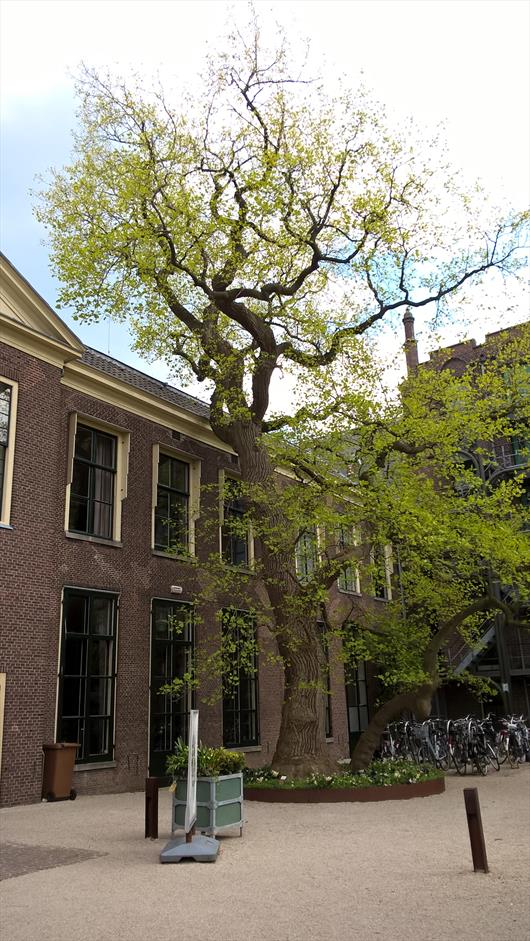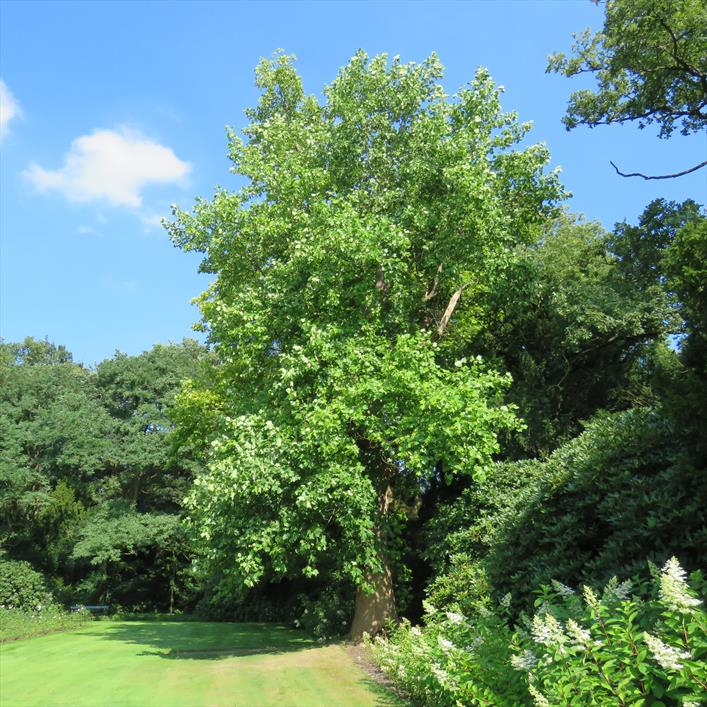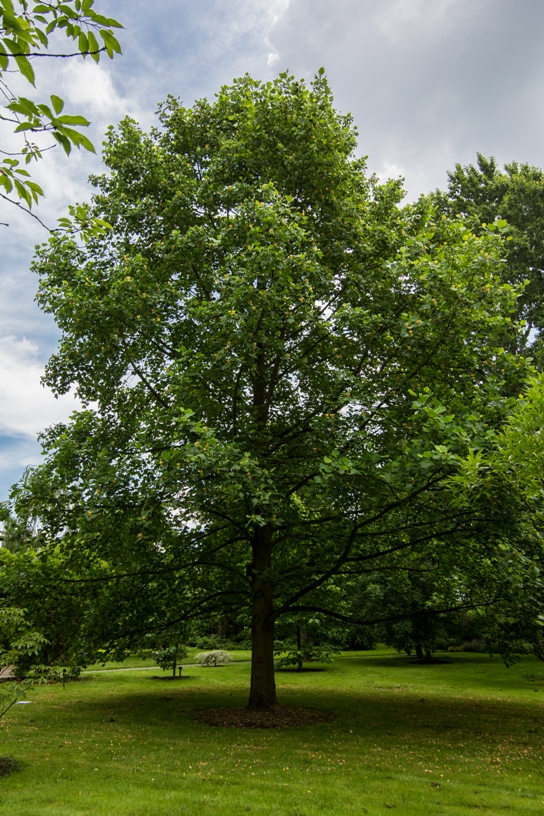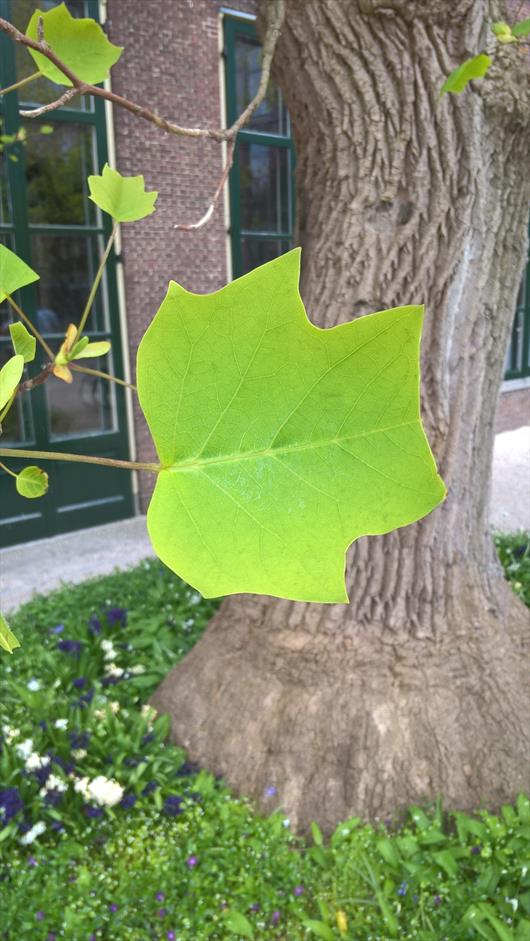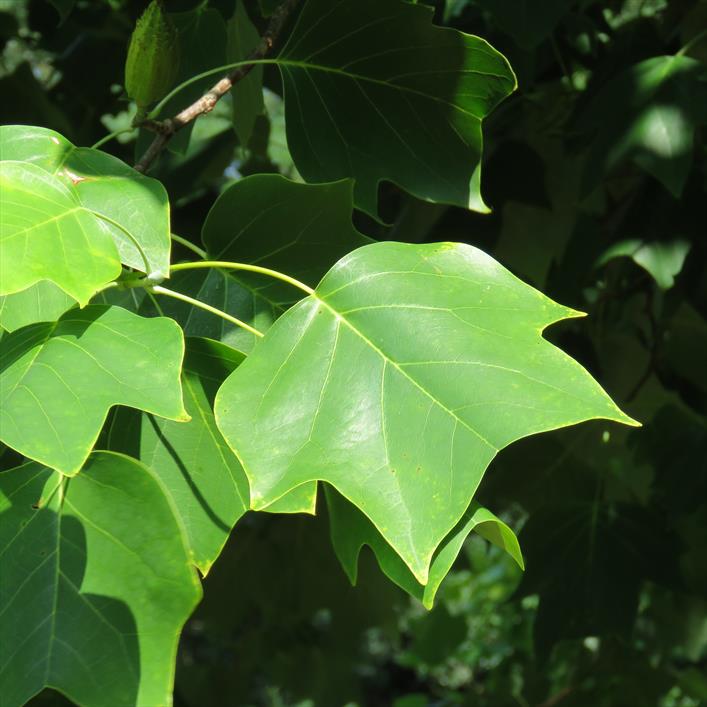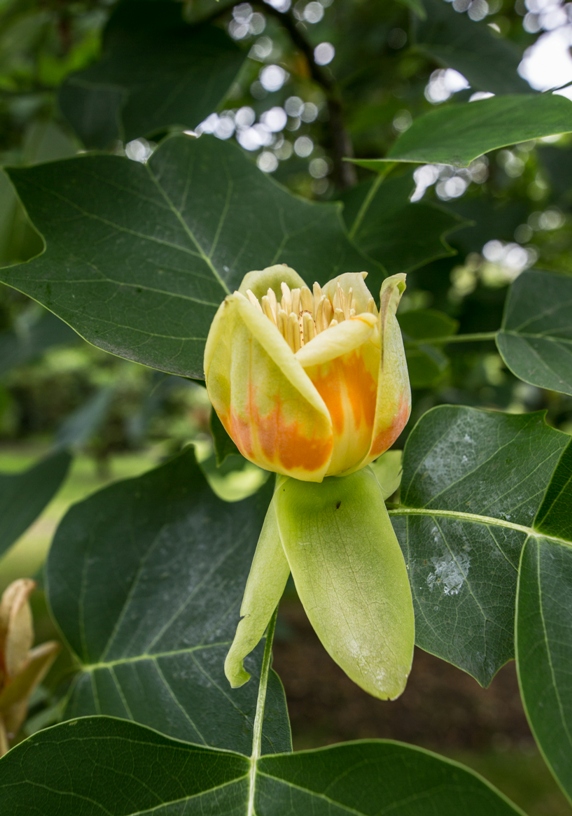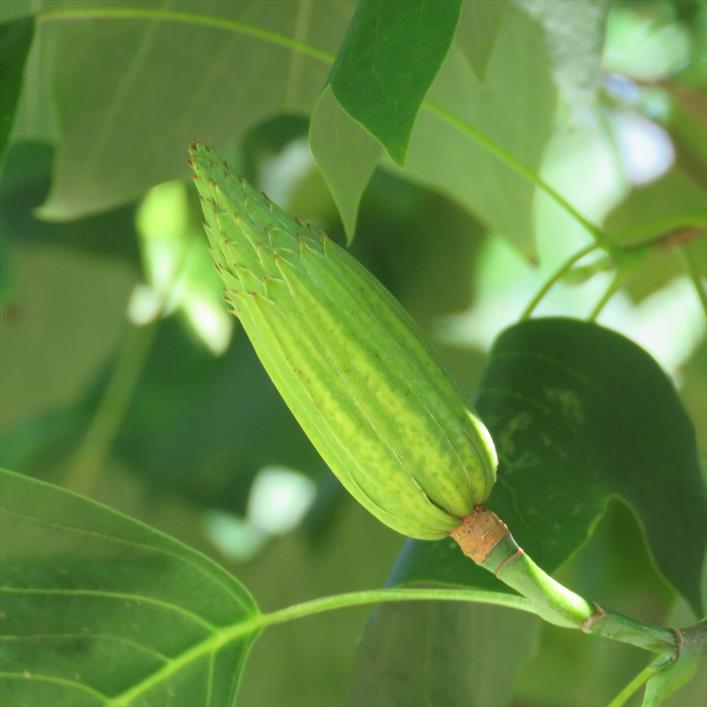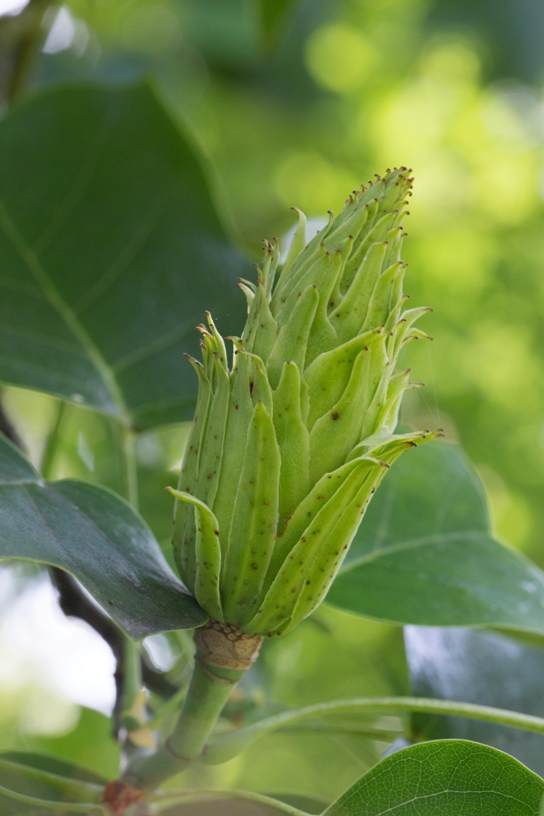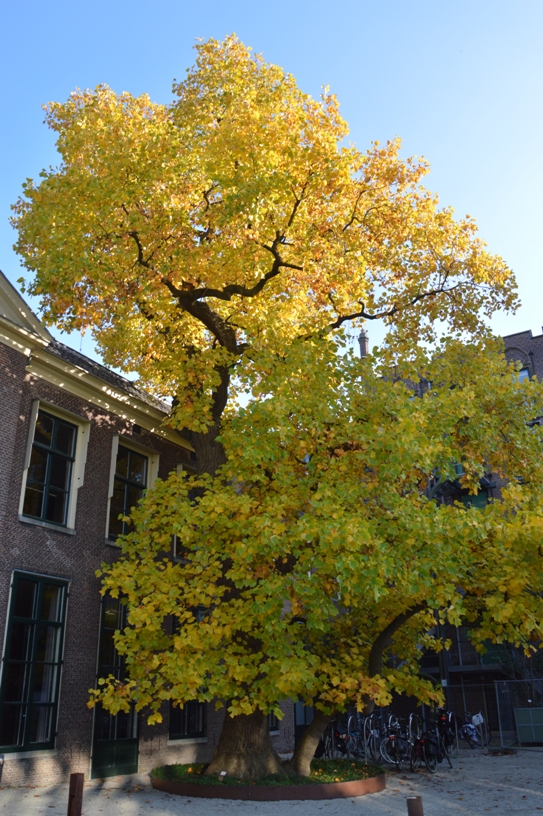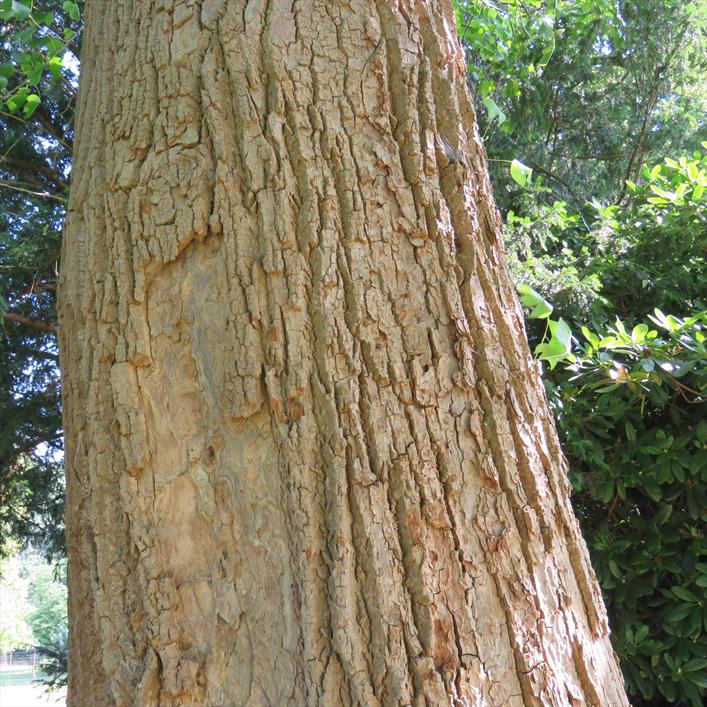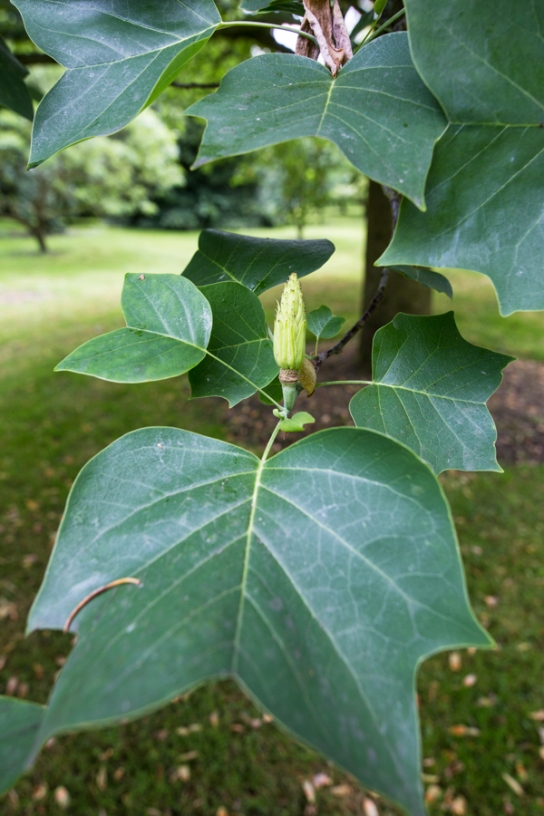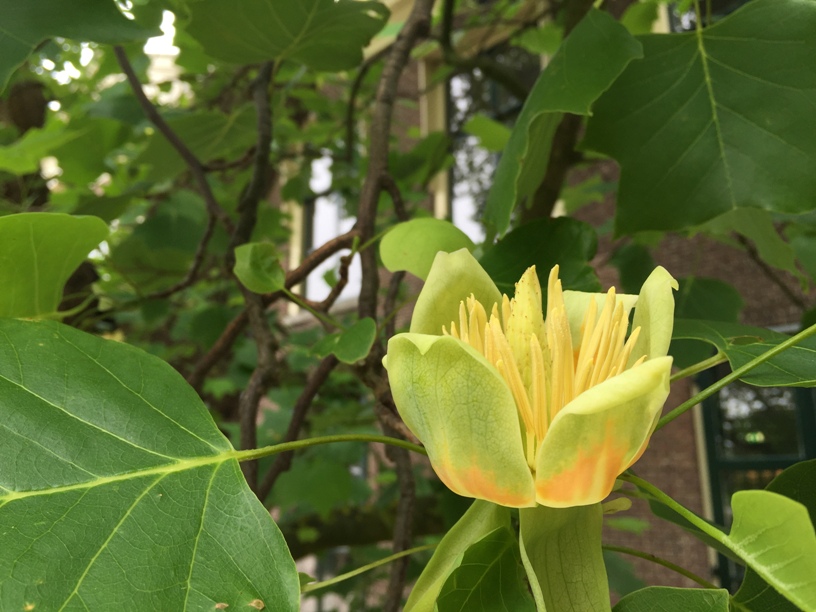Tulip-tree
Liriodendron tulipifera
Magnolia family (Magnoliaceae)
Survived in North America
To the layman the tulip tree is synonymous with the magnolia. The tulip tree belongs to the same family but to a different genus, Liriodendron. The genus name comes from the Greek meaning ‘lily tree’. The flowers of this tree resemble a lily but also the tulip, hence the vernacular name tulip tree. Magnolia produces flowers long before the leaves break bud but Liriodendron only flowers when the tree is in full leaf. The green-orange flowers are tucked away amongst the leaves so they are often overlooked.
The tulip tree is widely planted as an ornamental tree due to the magnificent leaves. Some 10 to 20 million years ago the genus Liriodendron grew across the northern hemisphere but was driven out of Europe during the Ice Age.
Read more.... »Themes
Crown jewel on the Twickel Estate and in the Leiden Botanic Garden.
The root is used as a lemon flavouring in beer made from spruce trees to counteract the bitterness of the beer.
The flowers are a major source of nectar for honey bees, which produce a dark, amber honey loaded with antioxidants.
The wood is fine grained, soft, light, easily worked, durable, brittle, but does not split. A valuable timber, much used for interior finishes, furniture, construction and plywood.
A gold coloured dye can be obtained from the bark.
The first settlers in eastern North America were probably amazed at the rainforests they saw: in contrast to the monotonous European forests these had a large number of trees all of different heights. The largest giants were often Liriodendron - straight trees, 60 meters high with a trunk diameter of 3 meters. In the 18th century logging begn and in the 19th century almost all of these giants had disappeared.
A gold-coloured dye can be obtained from the bark.
The inner bark and the leaves were used for medicinal purposes by the Cherokee Indians and the first colonists to arrive in Appalachia.
Details
| Description: | Tree, up to 30 m. |
|---|---|
| Distributions: | North america, canada |
| Habitat: | On mountain slopes and by streams, on rich, moist soils, from 0 to 1500 m in altitude. |
| Year cycle: | Perennial (polycarpic decidous) |
| Hardiness: | -4 - 5 f (hardy - very cold winter) |
| Flowering period: | Juni |
| Flower color: | Green, yellow, orange |
| Notes on flowers: | Flowers yellowish-green with an orange spot. |
| Fruiting period: | September - oktober |
| Fruit color: | Other |
| Notes on fruits: | 5 - 7(9) cm lang, rechtopstaande kegelvormig verzameling gevleugelde nootvruchten, eerst groen, eenmaal rijp beige-bruin, vallen uitelkaar begin winter, de spil blijft achter. |
| At its best: | Juni |
Sources
http://www.pfaf.org/user/Plant.aspx?LatinName=Liriodendron+tulipifera,https://www.rhs.org.uk/Plants/10338/i-Liriodendron-tulipifera-i/Details,
https://www.rhs.org.uk/Plants/10338/i-Liriodendron-tulipifera-i/Details,
Dendrologie van de lage landen - Jan de Koning en Wim van den Broek, Het bomenboek - Hugh Johnson, Bomen hun vorm en kleur - Dr. B.K. Boom en H. Kleijn
